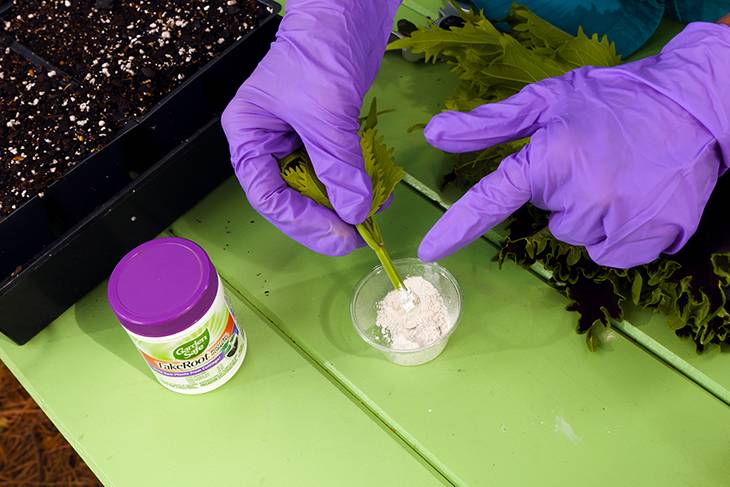Plant propagation speeds up transplanting process
Wednesday, October 7, 2020
What gardener has ever said, “I think I have enough plants?” The likely answer is none. Fortunately, one way to boost the home garden plant supply is through propagation.
Plant propagation is the process of making new plants, and a great way for gardeners to get more out of their garden investment, said Casey Hentges, host of Oklahoma State University Extension’s Oklahoma Gardening television program. There are many different ways to propagate plants, Hentges said.
“Stem cuttings involve taking a part of the parent plant and causing it to regenerate itself into a new plant, which results in the new plant being genetically identical to the parent,” Hentges said. “Basically, you are cloning the plant. This is a great way to maintain some of your favorite species in the landscape.”
Hentges said varieties of coleus are a good choice for gardeners to experiment with propagation, and this is a great time of year to go take cuttings.

“One of the great things about coleus is that you get some very vivid colors from the vegetation of the plant, unlike other plants that only showcase color in the flowers,” Hentges said. “Coleus are one of the easiest plants to propagate by stem cutting, which involves simply cutting a few stems from the plants and putting them in water where they’ll develop roots. Be sure to place the container in the sun where they’ll continue to photosynthesize.”
For other plant cuttings which may be more difficult to root than coleus, be sure to purchase rooting hormone powder to encourage root growth. Check the label for indole-3-butyric acid, also known as IBA. These powders are available in various percentages, depending on the type of plant being propagated.
“When starting the propagation process, keep sanitation in mind and be sure to look for the healthiest tissue of the plant you’re wanting to propagate. Ideally, take the cutting from the top of the plant where there’s more airflow and less disease potential,” she said. “Make the cuts just below the second node, where the leaves connect to the stem.”
Remove the leaves from the lower node near the cut end. Then coat the lower node and cut end of the stem with the root hormone before placing the stem into potting soil. Two smaller leaves should remain above the potting soil to continue to photosynthesis. Once planted, keep the new cuttings moist, but not soggy.
“I suggest you do some research regarding the type of plant you’re wanting to propagate, as this method for coleus may not work for different types of plants,” Hentges said.
More information about plant propagation is available on the OSU Extension website.
MEDIA CONTACT: Trisha Gedon | Agricultural Communications Services | 405-744-3625 | trisha.gedon@okstate.edu
